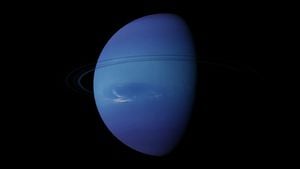After nearly a decade of anticipation and preparation, NASA's Europa Clipper spacecraft has officially embarked on its ambitious mission to explore one of the solar system's most intriguing bodies—Jupiter's icy moon, Europa. The launch took place on October 14, 2024, at 12:06 EST, aboard SpaceX's powerful Falcon Heavy rocket, marking the beginning of what researchers hope will yield significant insights about the potential habitability of Europa.
The Europa Clipper, which was delayed due to Hurricane Milton, is the first dedicated spacecraft solely focused on studying a distant ice-covered moon. Once operational, it will cover approximately 1.8 billion miles to reach Jupiter by April 2030, where it will conduct 49 flybys of Europa.
The spacecraft is equipped with nine sophisticated instruments aimed at analyzing the moon's surface and evaluating its subsurface ocean, which scientists believe is one of the most promising places to look for signs of life beyond Earth. Jenny Kampmeier, a systems engineer at NASA, expressed the significance of this mission, stating, "It’s going to change our understandings of our place in the universe if this is a worldthat could support life."
The Clipper itself is NASA's largest spacecraft ever built for planetary missions, stretching around 100 feet long and costing over $5.2 billion. This scientific instrumentality is required to peel away the layers of mystery surrounding Europa, where researchers are eager to discover if the moon holds the necessary conditions for life.
Robert Pappalardo, the mission's project scientist at NASA's Jet Propulsion Laboratory, elaborated on the unified function of the instruments on board, saying, "The instruments work together hand in hand to answer our most pressing questions about Europa.” This cooperation is pivotal for delving deeply from the moon's core and rocky interior to its icy shell, atmosphere, and the space environment surrounding it.
The pre-launch activities included necessary communications and briefings to confirm the spacecraft's readiness. On the eve of the launch, NASA's top officials, including Jim Free, Associate Administrator, acknowledged recent hurricane impacts on the launch schedule and expressed resilience and determination. "We forge on, undeterred, sending off this $5 billion spacecraft toward its destination nearly two billion miles away," he said.
With the launch on the horizon, NASA prepared to initiate final procedures. Inside the NASA News Center at Kennedy Space Center's launch complex, excitement percolated. Journalists, space enthusiasts, and scientists gathered to witness the culmination of years of design, modifications, and partnership with SpaceX.
By 11:00 AM, the tension shifted to anticipation as officials shared insights and updates about the Falcon Heavy rocket, which was now poised and ready to lift off. Tim Dunn, the Launch Director, announced, "The NASA Europa Clipper team is go for propellant load and go for launch." This elicited applause, signaling relief and enthusiasm among attendees.
When the countdown began, the room transformed to match the palpable excitement. One shout from the crowd almost synchronized with the countdown as individual seconds stretched out—a countdown to something monumental. With each tick, the anticipation mounted until the climatic roar of the Falcon Heavy lit up the sky.
Witnesses described the sensation of the launch as unparalleled, with plumes of smoke and fire marking the departure of the Clipper to the expanse of space. The moment encapsulated not only thrilling advancements of technology but also humanity’s deep-seated drive for discovery—an echo of the question, "Are we alone?"
Despite the initial success of the launch, the mission's complexity extends beyond just leaving Earth's atmosphere. The post-launch phases will hinge on ensuring the spacecraft's instruments function correctly as it begins its extensive analysis of Europa. With its powerful solar panels, the Europa Clipper will utilize sunlight for energy on its way to the Jovian system, where it will face the harsh realities of space.
Scientists are not merely hunting for signs of life. The mission seeks broader knowledge about how celestial bodies can support life, especially those hidden beneath layers of ice. The expectation around Europa stems from previous observations hinting at its subsurface ocean, thought to harbor the ingredients needed for life—water, energy, and the right chemical conditions.
Overall, the Europa Clipper mission is set on exciting frontiers, exploring this distant moon and inching closer to answering some of humanity's most significant questions about life beyond Earth.



